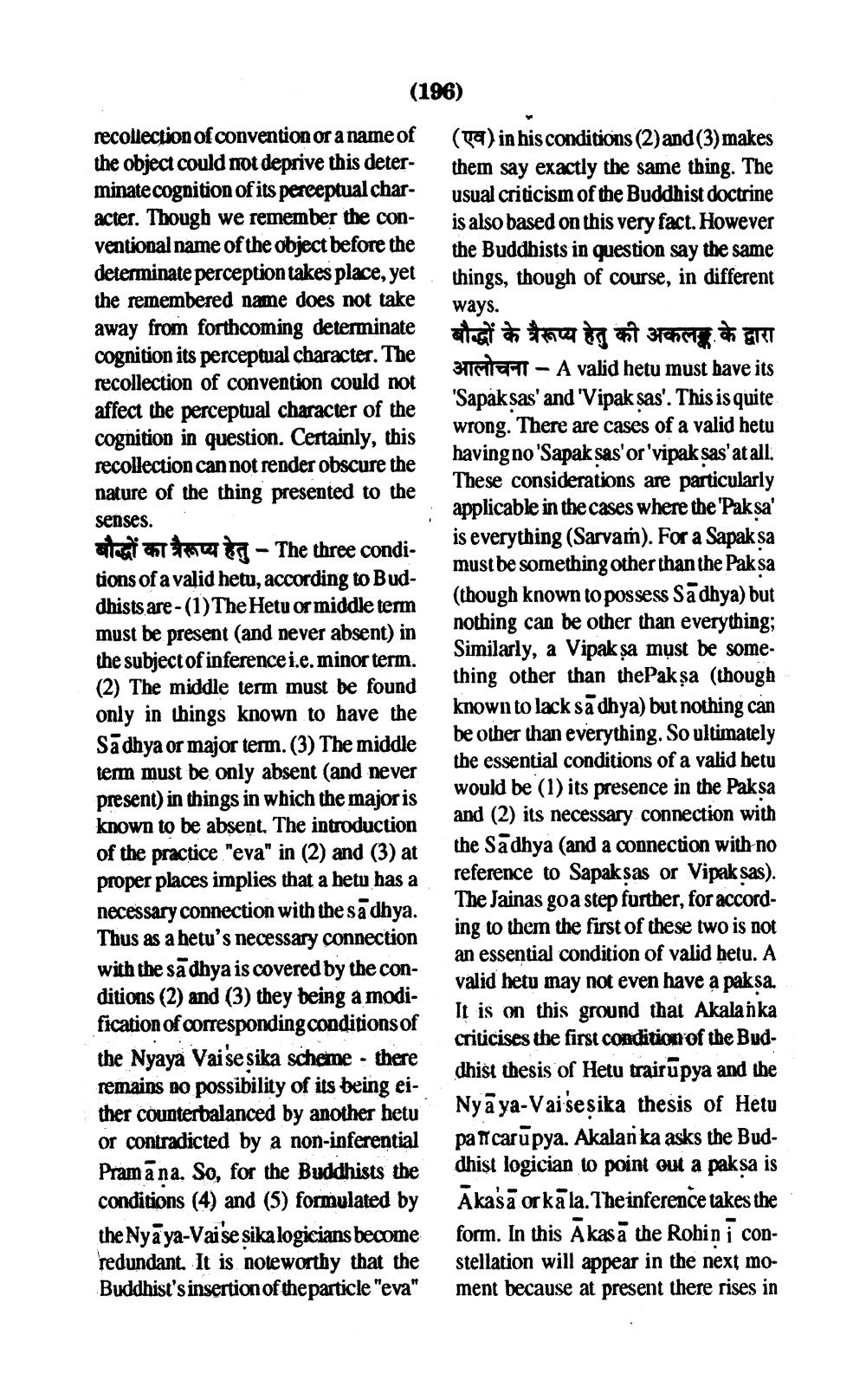________________
(196)
recollection of convention or a name of the object could not deprive this determinatecognition of its perceptual character. Though we remember the conventional name of the object before the determinate perception takes place, yet the remembered name does not take away from forthcoming determinate cognition its perceptual character. The recollection of convention could not affect the perceptual character of the cognition in question. Certainly, this recollection can not render obscure the nature of the thing presented to the senses. attestato - The three conditions of a valid hetu, according to Buddhists are -(1) The Hetu or middle term must be present (and never absent) in the subject of inferencei.e.minor term. (2) The middle term must be found only in things known to have the Sādhya or major term. (3) The middle term must be only absent (and never present) in things in which the major is known to be absent. The introduction of the practice "eva" in (2) and (3) at proper places implies that a betu bas a necessary connection with the să dhya. Thus as a hetu's necessary connection with the să dhya is covered by the conditions (2) and (3) they being a modification of corresponding conditions of the Nyaya Vai'se sika scheme - there remains no possibility of its being either counterbalanced by another betu or contradicted by a non-inferential Pramā na. So, for the Buddhists the conditions (4) and (5) formulated by the Nyaya-Vai'se sika logicians become redundant. It is noteworthy that the Buddhist's insertion of the particle "eva"
(a) in his conditions (2) and (3) makes them say exactly the same thing. The usual criticism of the Buddhist doctrine is also based on this very fact. However the Buddhists in question say the same things, though of course, in different ways. बौद्धों के त्रैरूप्य हेतु की अकलङ्क के द्वारा
आलोचना- A valid hetu must have its 'Sapaksas' and 'Vipak sas'. This is quite wrong. There are cases of a valid hetu having no 'Sapak sas'or'vipak sas'at all, These considerations are particularly applicable in the cases where the 'Pak sa' is everything (Sarvam). For a Sapak sa must be something other than the Paksa (though known to possess Sãdhya) but nothing can be other than everything; Similarly, a Vipak sa mụst be something other than thePaksa (though known to lack sa dhya) but nothing can be other than everything. So ultimately the essential conditions of a valid hetu would be (1) its presence in the Paksa and (2) its necessary connection with the Sadhya (and a connection with no reference to Sapaksas or Vipak sas). The Jainas goa step further, for according to them the first of these two is not an essential condition of valid hetu. A valid hetu may not even have a paksa. It is on this ground that Akalanka criticises the first condition of the Buddhist thesis of Hetu trairūpya and the Nyāya-Vai sesika thesis of Hetu pa ficarūpya. Akalan ka asks the Buddhist logician to point out a paksa is Akasa orkā la. Theinference takes the form. In this Akas ā the Robin i constellation will appear in the next moment because at present there rises in




